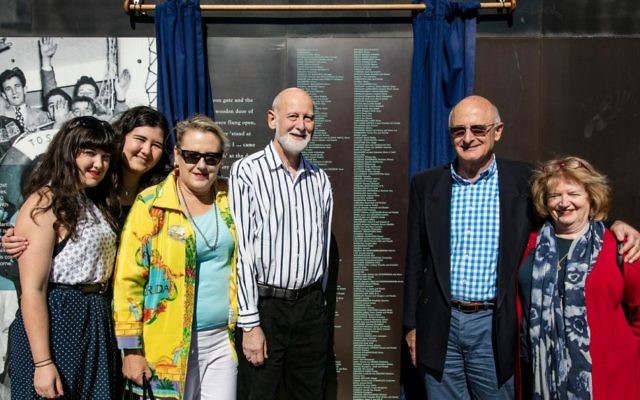Ronai family inscribed on Welcome Wall
Michael Ronai was the guest speaker on Sunday (May 7) when 364 names were added to the Australian National Maritime Museum’s Migrant Welcome Wall, which pays tribute to people who arrived in Australia by boat.

MICHAEL Ronai was the guest speaker on Sunday (May 7) when 364 names were added to the Australian National Maritime Museum’s Migrant Welcome Wall, which pays tribute to people who arrived in Australia by boat.
His parents Margit and Otto – who arrived in Sydney by boat as refugees from Europe in 1938 – now appear on this symbolic, and expanding, wall of tribute to the contributions of more than 28,000 migrants to Australia.
In what he calls “a bit of poetic justice and coming full circle”, Ronai built a career with the Department of Immigration and Ethnic Affairs from the late ’70s, and exactly 44 years since his parents stepped onto Australian soil, he was sent by then prime minister Malcolm Fraser to establish Australia’s first Latin American Refugee Program.
“I learnt a lot from that and it gave me a great deal of pleasure, and I think my parents were very pleased about it too,” Ronai said.
Aged just 15 in 1938, Margit, her younger sister Szuszi and their parents Adnor and Olga Kovacs had Hungarian passports and were living in Hamburg when Australia established its first refugee program to accept Jews from Europe.
The Kovacs were one of just three Hungarian Jewish families in Hamburg accepted into the program, out of 13 that applied.
After crossing into Italy, they boarded a ship called the Orcades, which sailed through the Suez Canal and arrived in Sydney on October 19, 1938, thereby escaping the forthcoming Holocaust.
Just three days later Otto, and his first wife Gertie, arrived in Sydney through the same refugee program.
Fortunate to have been granted exit visas after the Anschluss and been able to pay a hefty Reich flight tax – “more like a bribe” – they went to England, travelled by ship to Canada’s east coast, caught a train to Vancouver, and boarded the Aorangi bound for Australia.
A few months later Otto’s parents Heinrich and Elsa, and his twin brother Fritz and his wife Eli, arrived in Sydney from England on the same ship, and Otto and Fritz enlisted in the Australian Army. In 1943 Otto and Gertie divorced and a year later Otto met and married Margit.
Ronai attended the event with his wife and two daughters, and his brother and sister-in-law.
SHANE DESIATNIK

comments